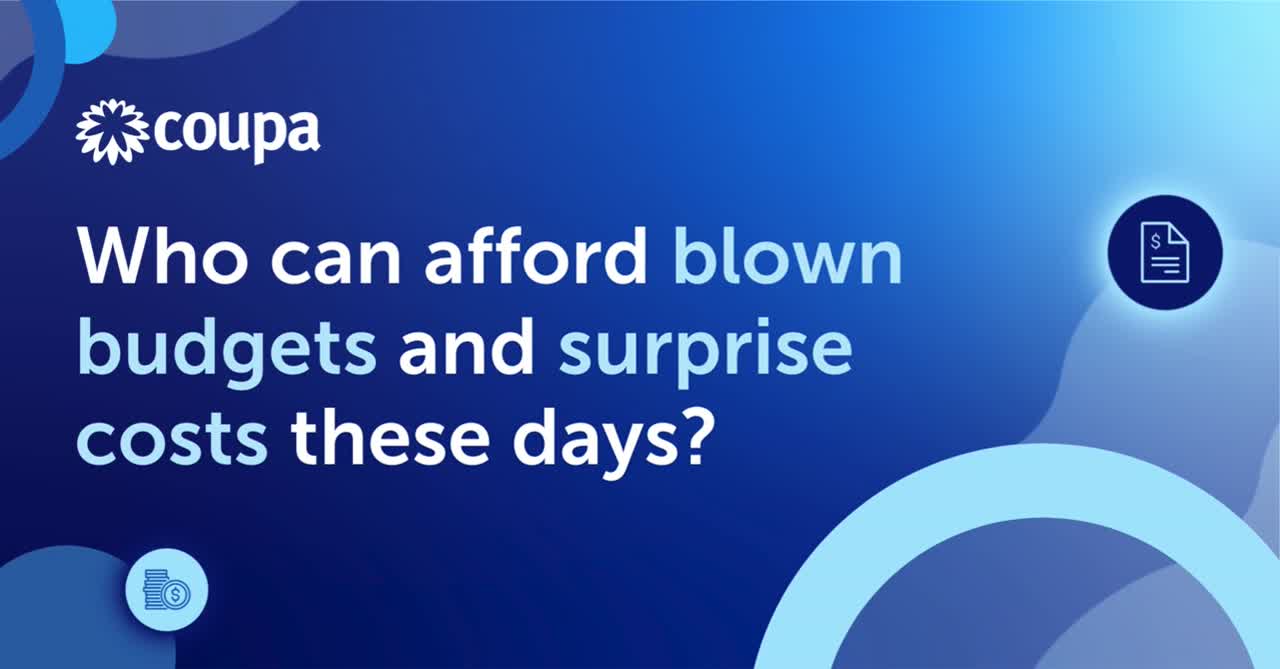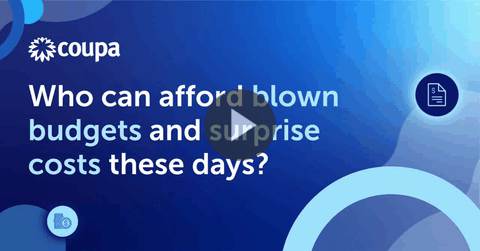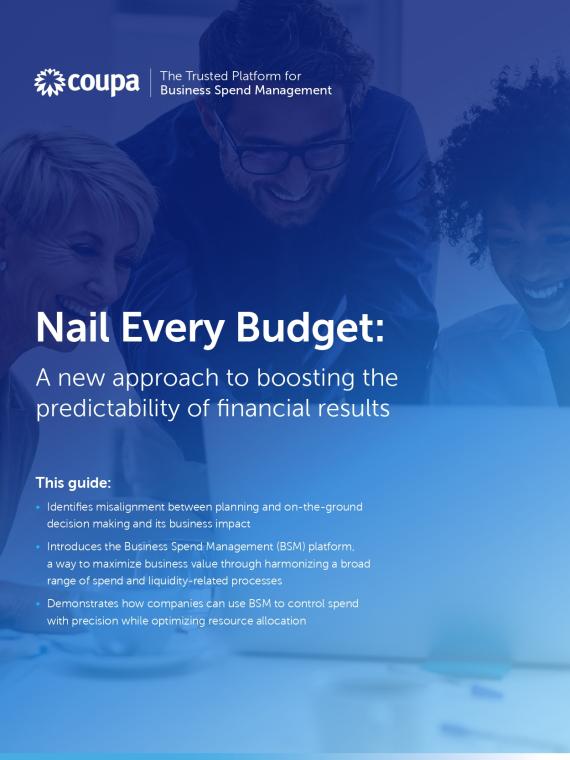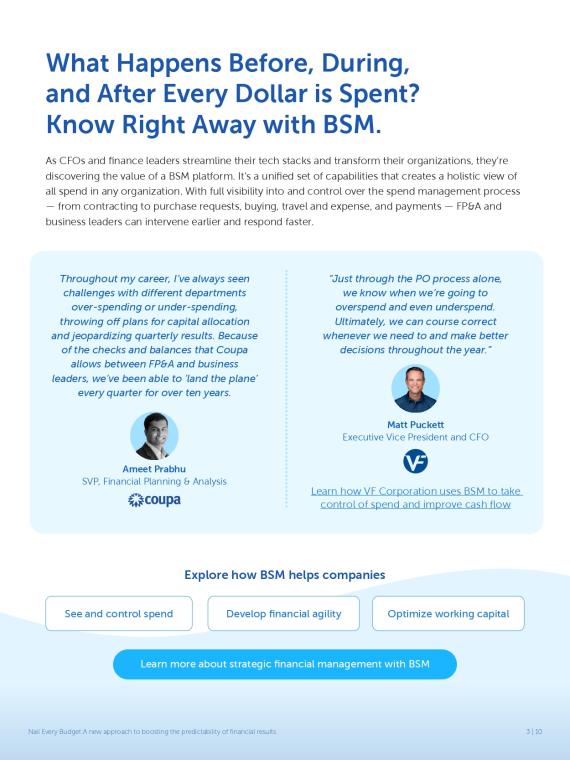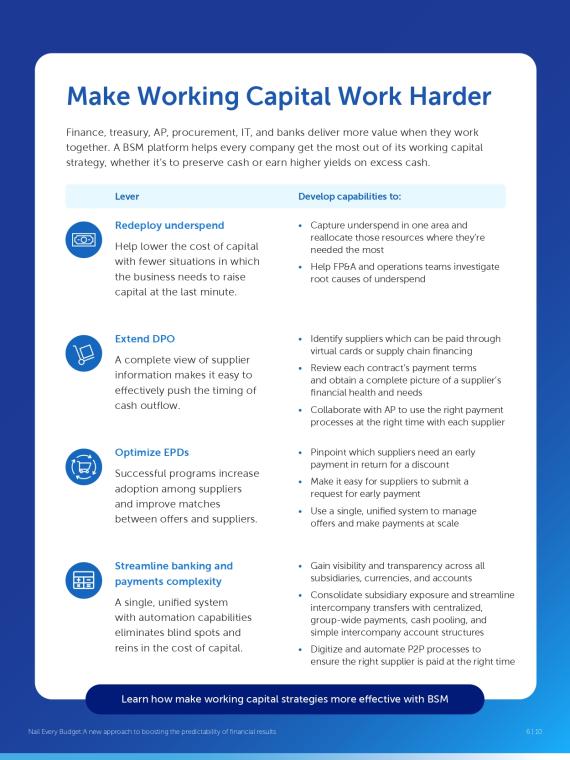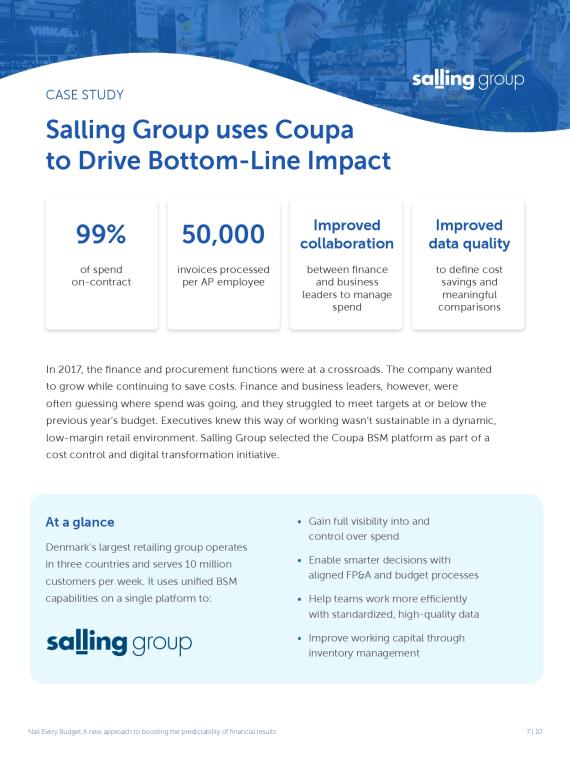Nail Every Budget: A new approach to boosting the predictability of financial results
Blown budgets, missed investment opportunities, delayed strategic projects – surprises like these prevent companies from thriving in a challenging macroenvironment. This guide provides insight into how FP&A and leaders from across the organization can work together to keep financial targets on track and deliver better business results.
Learn how to make smarter choices to contain costs, manage budgets, reallocate capital, and optimize cash.
Get your copy of this guide to:
- Understand the misalignment between planning and on-the-ground decision making and its business impact
- Get acquainted with Business Spend Management (BSM), an approach that uses advanced technology to provide visibility into and control over spend in real time
- See how companies can use BSM to control spend with precision while optimizing resource allocation
Many companies aren’t set up to answer important questions about when, where, and with whom every single dollar is spent. FP&A looks into the future and works with one set of information, and then runs a budget-vs-actual (BVA) process to identify what actually happened on the ground. Legacy structures and siloed processes prevent many companies from being more agile, driving profitability, and managing cash.
As CFOs and finance leaders streamline their tech stacks and transform their organizations, they’re discovering the value of a BSM platform. It’s a unified set of capabilities that creates a holistic view of all spend in any organization. With full visibility into and control over the spend management process — from contracting to purchase requests, buying, travel and expense, and payments — FP&A and business leaders can intervene earlier and respond faster.
FAQ
“The way budgeting — to be precise, budgeting and reconciliation — is done at most companies today doesn’t provide much control at all in terms of when, where, and how money is actually spent. Companies try to address this disconnect between their financial plans and on-the-ground decision making with a “budget vs. actual” (BVA) process that hasn’t changed much in 50 years.
What happens a lot of the time is that budgets are drawn up by one or a few sets of teams, but the people in operating roles across the company aren’t committed to those budgets because that financial information isn’t shared in a way they understand — they’re operators, and may not fully understand things like depreciation, or what the useful life of whatever asset they need is. The operating functions have a hard time keeping up with how their budgets are being spent and they wind up doing two things: They overspend and blow budgets, or they’re over-cautious and they underspend and prevent resources from being used elsewhere.
Either way, finance has to spend time at the end of each period reconciling all of this. Sometimes with information that is 15 days old once accounting has finished closing the books. It’s time-consuming work.”
A platform is crucial to any BSM initiative. More and more CFOs and finance leaders are prioritizing platform investments that quickly maximize the value of every dollar their businesses spend. Digital technology alone can’t manage escalating costs, high interest rates, and global market uncertainty. However, transformation initiatives that harness digital technology, insights, AI, and operational capabilities are uniquely positioned to help siloed functions such as FP&A and operations collaborate in new and better ways to solve challenges, together.
• Gain full visibility into and control over spend
• Enable smarter decisions with aligned FP&A and budget processes
• Help teams work more efficiently with standardized, high-quality data
• Improve working capital through inventory management
Today, finance and business leaders at Salling Group make smarter financial choices together. Teams found common ground when they realized that a BSM initiative could deliver benefits that both groups value.
